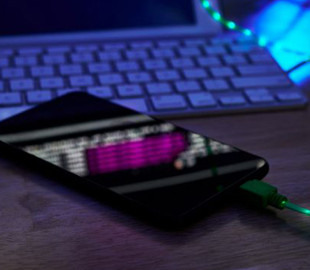
Many of us are used to leaving our phones on charge overnight, but it may not be as harmless as it seems.
RBK-Ukraine (Styler project) tells us why overnight charging can be dangerous for your device and how to avoid unpleasant consequences, with a link to the technology website MakeUseOf.
Battery Degradation and Safety Risks
Why You Shouldn't Charge Your Phone's Battery Overnight? The main reasons are that it shortens battery life and can cause overheating, which is dangerous if left unattended.
The battery wears out the fastest if you regularly charge it above 80 percent and discharge it below 20 percent. The optimal charge level for the device to work is about 50 percent.
Prolonged charging can also lead to an increase in temperature, which naturally worsens the condition of the battery and creates a risk of fire. Therefore, you should not leave your phone under a pillow – lack of air circulation can damage the battery and increase the likelihood of a fire.
Also, keep in mind that it's not just the phone itself that gets hot: the charger and cable can also get hot and pose a danger. This is especially true of non-original chargers – they are cheaper, but not always safe.
You should avoid exposing your phone to extreme temperatures. Temperatures below 0 and above 70 degrees Celsius accelerate the wear of the lithium-ion battery. Do not leave your phone in direct sunlight or in a car on a hot or cold day.
Overnight charging deteriorates the battery
Your phone's battery cannot be recharged – manufacturers have built in protective mechanisms to prevent this. However, when the charge reaches 100 percent, the device begins to receive so-called “trickle charging” – a small amount of energy that compensates for the natural consumption of the device.
By maintaining the charge at 100 percent and leaving the phone connected to the network, you overload the battery, forcing it to waste energy when it does not need to.
Smartphones and tablets use a type of lithium-ion battery called lithium-polymer (Li-Poly). These batteries are generally safer, more compact, and charge faster. However, the same operating rules as for lithium-ion batteries apply to Li-Poly.
It all comes down to how lithium batteries work: ions move between layers during charging. Overcharging or undercharging deteriorates the cell structure, as oversaturation of one of the layers with lithium increases internal resistance.
How to Determine the Life of a Phone Battery? Manufacturers rate it by the number of “charge cycles.” One cycle is when the battery is charged from 0 to 100 percent and then discharged back to 0 percent. The number of estimated cycles shows how many full charges the battery can withstand before a noticeable decrease in capacity.
To extend the life of your battery, avoid extreme charging. Partial charges and discharges that add up to 100 percent are considered one full cycle.
By charging your device between 20 and 80 percent, you can extend the life of your battery to 1,000 cycles or more before capacity begins to noticeably decline. That's about three years of daily exercise.
Using Optimized Battery Charging
Companies rarely allow you to fully use your battery's full capacity. However, the screen will show 100 percent charge when the device reaches its maximum allowable capacity. There is one surefire way to avoid charging your device above the recommended 80 percent: monitor the charging process.
But it's not the most convenient option. That's why Apple introduced Optimized Battery Charging with iOS 13 by default. This smart feature tracks your charging habits, and if you regularly leave your phone on charge for long periods of time, including overnight, it will only charge to 80 percent. It will then continue charging to 100 percent just before you're expected to turn off the device.
You can turn this feature on or off by going to Settings, Battery, Battery Health & Charging, Optimized Battery Charging. This screen will also show the maximum battery capacity compared to when the device was new so you can track battery degradation.
Using apps while charging affects the battery
You shouldn't use your device for intense activities while it's charging. In fact, many people do. However, regularly using your phone while it's charging can cause irreversible damage.
It's like overclocking a PC's processor. Think about how running multiple apps at once affects it: it heats up and doesn't work properly. This also adds “trickle charging”.
Watching a YouTube video or progressing to the next level in your favorite game while your phone is plugged in to charge may be tempting, but it's not worth the negative impact on your battery.
Of course, this depends on how long you plan to use your smartphone. Regularly using apps while charging will noticeably slow down your phone in the second year of use. Therefore, if you want to use your device for a long time, avoid using applications while charging.
However, checking messages or emails should be perfectly acceptable. Just don't do anything that requires a lot of energy.
How to extend your smartphone's battery life
Here are some simple tips to help you extend your smartphone's battery life.
- Use partial charges, keeping the charge level between 20 and 80 percent
- Reduce the time your battery stays at 100 percent by not charging your phone overnight. This is when the battery wears out the fastest
- Keep the device at room temperature, avoiding extreme temperatures
- Reduce battery consumption by disabling unnecessary services. Use power saving modes to get more battery life on each charge
- You may not notice much of a difference in the short term. But you'll be happy when your phone can easily last all day on a single charge

